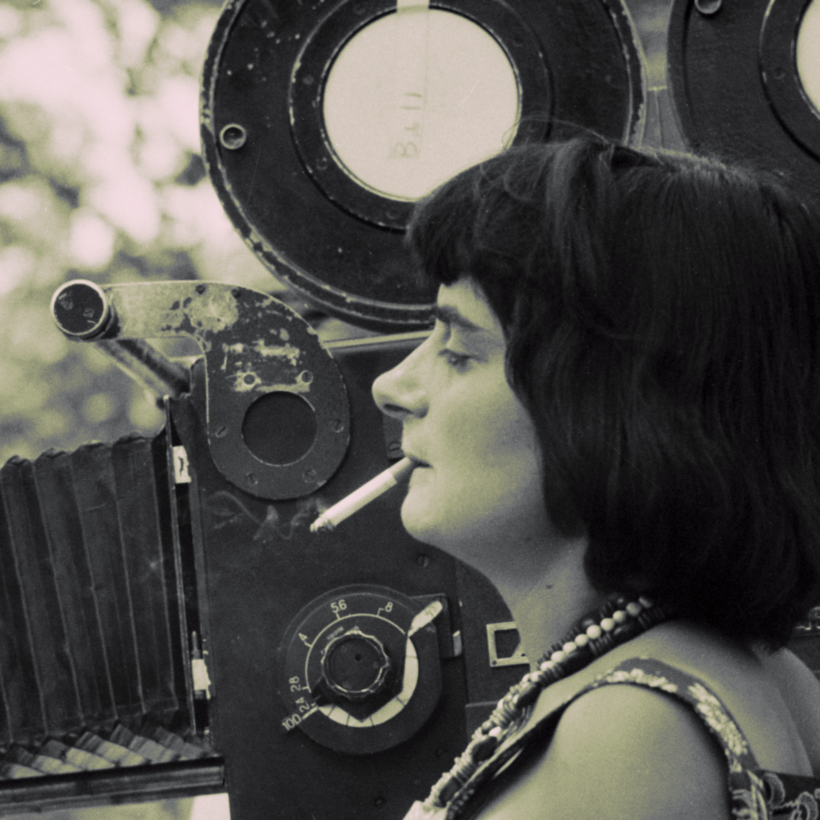It took years for Agnès Varda, the so-called godmother of the French New Wave, to command respect in the male-dominated world of directing. Yet by the time Varda died, in 2019, at age 90, she had risen to sainthood and was internationally celebrated by three generations as a pioneer and disrupter of cinema.
Progressives venerated Varda’s films for showing the ways society is tilted against women, refugees, the underfed, and the unhoused. Fashionistas kvelled over her whimsical, two-toned bowl haircut and coordinating fuchsia ensembles. Critics and other directors rhapsodized about her films, which blurred boundaries between documentary and fiction.
When critic and filmmaker François Truffaut reviewed her debut film, La Pointe Courte, in 1956, he had yet to make a movie himself and panned it, joking about her resemblance to leading man Philippe Noiret. Five years later, he recanted it and agreed to co-produce her script “La Mélangite.” Unfortunately, like so many of her screenplays, it did not get financed.
Varda’s 65 years behind the camera is a record for a woman director. While I was writing my biography of her, A Complicated Passion, a significant number of filmmakers told me how she had inspired them. “I felt that [she] gave me permission to look and the power to tell the subject what to do,” said the Oscar-nominated director Agnieszka Holland. For a 19-year-old Martin Scorsese, Cléo from 5 to 7 “[made me feel] that I was seeing the world and experiencing time from a woman’s point of view for the first time in movies.”
Agnés Varda’s 65 years behind the camera is a record for a woman director.
Researching my book, I was most struck by the career arc of the Brussels-born, Paris-based filmmaker. She began as a still photographer, proceeded to make her name as a writer and director, and then, during her last 15 years, created three-dimensional museum installations that combined photos and videos. When she mastered each medium, she re-invented it from the inside out.
Unlike the men of the New Wave, such as Jean-Luc Godard, Alain Resnais, and Truffaut, Varda did not start out as a cinephile. She liked to say that she was ignorant of movies, having seen fewer than 25 before making one. In her mid-twenties, she conceived of La Pointe Courte as a project to distract a friend with terminal cancer. Influenced by William Faulkner’s The Wild Palms, she overlaid a fictional story of a troubled marriage onto the real-life struggle of a community of fishermen trying to ply their trade in polluted waters.
After marrying Jacques Demy, the director and screenwriter of movies including The Umbrellas of Cherbourg, Varda made and wrote features, such as Cléo from 5 to 7 (1962) and Vagabond (1985), both widely praised. But by the middle of her career, she felt invisible. Varda found that working without a fleshed-out script helped her find a story’s essence quickly. She started producing and directing lower-budget films and television shows. She bought back the rights to her previous works so that she, not a corporate entity, could reap the profits.
Just as Michelangelo thought every block of stone had a statue inside it, Varda thought every story had an inherent structure she needed to uncover. One morning in 1999, at her local market, she noticed modern-day gleaners—people who harvest the grain and produce left behind on fields—scoop up discarded lettuce and damaged fruit abandoned by vendors. To make The Gleaners and I (2000), she set out with her lightweight digital movie camera to explore why people harvest what others reject, showing the human impact of food insecurity, waste, and agribusiness. Turning the camera on herself, she confesses that she’s a type of gleaner, too, because she finds treasures in other people’s junk.
By the end of Varda’s life, she was at the center of the mainstream. Madonna wanted to remake Cléo from 5 to 7. Angelina Jolie presented her with an honorary Oscar. And Ava DuVernay encouraged other filmmakers to help fund her posthumously released documentary Varda by Agnès.
The pioneer of the French New Wave, long the only woman in its ranks and uneasily admitted into its pantheon, was no longer ahead of her time but firmly within it. With the help of colorful hair dye and duds, she created a new persona. Her grandsons dubbed her “Mamita Punk” (Punk Grandma). After so many years of professional invisibility and exclusion from film history, she cheerfully accepted the late-life recognition as a welcome distraction from her struggle with macular degeneration and breast cancer.
While researching my book, I learned how hard she fought to reach this final stage of universal acclaim. In April her canonization was complete. Varda now has her face on a French postage stamp.
Carrie Rickey is a film critic, art critic, and film historian

